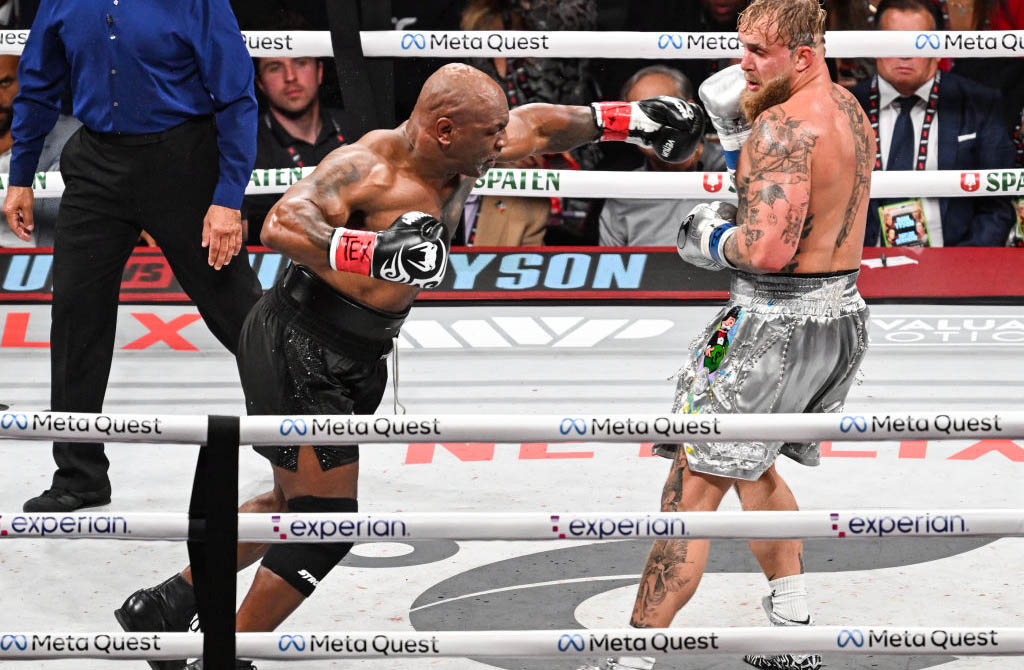NAB: ‘Broadcast Television’ Is the ‘Buffer-Free MVP of Live Sports’
In response to widespread glitches and buffering during Netflix’s Tyson-Paul event, the industry group touted the reliability of broadcast and NextGen TV

In response to the streaming problems faced by viewers of the Jake Paul-Mike Tyson boxing match on Netflix, the National Association of Broadcasters has issued a blog calling broadcast TV the “buffer free MVP of live sports” because of its reliability, free over-the-air access and robust one-to-many architecture.
Netflix has reported that 60 million households watched the Paul vs. Tyson main event live around the world, on Nov. 15 peaking at 65 million concurrent streams, but the hefty traffic also led to widespread criticism as the streaming coverage was marred by glitches and buffering.
“If you were one of the many of viewers who tuned into the highly-anticipated boxing match between Mike Tyson and Jake Paul this past weekend, you were probably expecting exciting nonstop action,” NAB Senior Vice President of Communications Alex Siciliano wrote. “Instead, what transpired was far more disappointing—a viewing experience marred by glitches and buffering from a popular pay-TV service trying its hand in live sports.”
The criticism as a record amount of popular sports content has been shifting to streaming media.
“It was a good reminder that when it comes to live sports, no other medium can match broadcast television’s high-quality, reliable viewing experience,” noted Scilliano, who also stressed that investments being made in NextGen TV will only improve those experiences. “No costly subscriptions. No worrying about your internet speed. Just the excitement of the game, delivered in high-definition to your TV screen. The beauty of television broadcasting is its ‘one-to-many’ architecture. For popular sports programming, like the Super Bowl or World Series, there is no limit to how many viewers can tune in—and no risk of buffering.”
The streaming problems raise concerns about Netflix’s ability to handle its upcoming NFL games on Christmas Day.
But the global reach of streaming platforms like Netflix and their ability to finance increasingly expensive premier sports rights makes the shift of rights to streaming services likely to accelerate, analysts argue.
The professional video industry's #1 source for news, trends and product and tech information. Sign up below.
“Many are ridiculing Netflix’s technical struggles last Friday during the Tyson-Paul fight to highlight how unprepared Netflix is for the NFL on Christmas,” LightShed Partners analyst Richard Greenfield wrote. “However, the real takeaway should be that Netflix can deliver unprecedented reach. Friday’s fight should be a wake-up call to every sports executive on planet earth that they need a Netflix strategy.
“Netflix’s ability to reach an average of 60 million households globally (AMA throughout the entire fight) with well over 100 million people watching live, is truly astounding in that it only represents 21% of Netflix’s sub base (and remember, 34% of Netflix’s subscribers are in Europe and would have been asleep during the fight, implying 32% of its non-European sub base watched the fight live),” he explained.
“And for those that worry about Netflix’s ability to handle the NFL (and Beyoncé), we believe they gained invaluable knowledge about scaling global live events that is not possible in a lab,” he added, citing a post from a YouTube engineer describing the difficulties of planning for a large streaming event.
George Winslow is the senior content producer for TV Tech. He has written about the television, media and technology industries for nearly 30 years for such publications as Broadcasting & Cable, Multichannel News and TV Tech. Over the years, he has edited a number of magazines, including Multichannel News International and World Screen, and moderated panels at such major industry events as NAB and MIP TV. He has published two books and dozens of encyclopedia articles on such subjects as the media, New York City history and economics.

